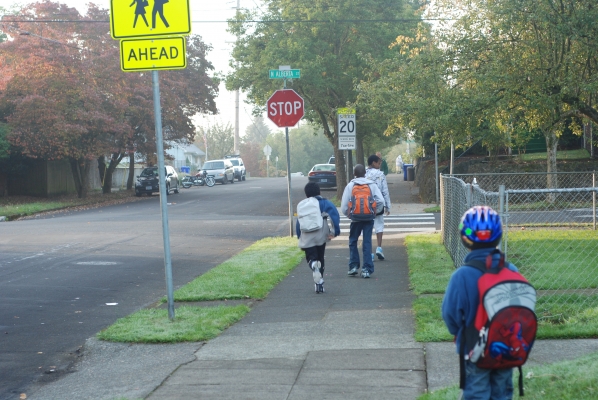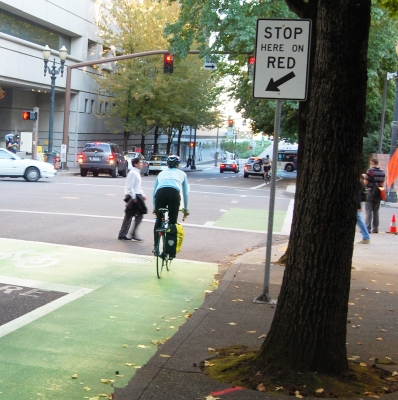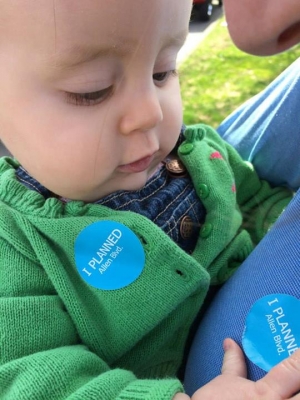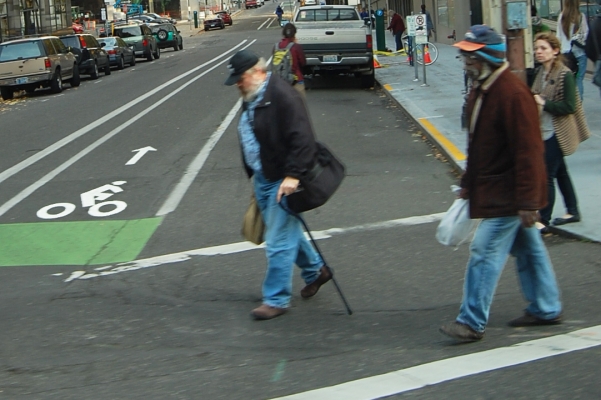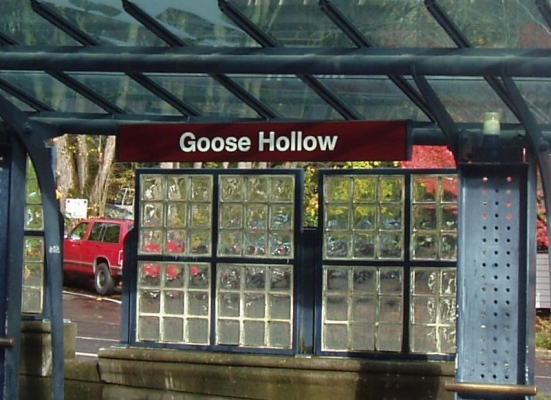New research from NITC looks at Health Impact Assessment, or HIA, in transportation planning.
The leading causes of death in the United States are no longer communicable diseases. Instead, chronic conditions linked to behaviors and shaped by environments—such as obesity and diabetes—are today’s most pressing public health concerns.
HIA is a way of evaluating the effects that planning decisions will have on public health.
Researcher Nicole Iroz-Elardo studied this relatively new endeavor, analyzing and comparing three contemporary case studies in HIA.
She will share her findings in an IBPI webinar on July 16, 2014.
By engaging professionals from multiple disciplines, HIA can give planners a larger knowledge base to inform decisions.
In a collaborative process that did not emerge in the U.S. until 1999, stakeholders and community members engage with public health professionals to identify and deliberate about health interests related to the proposed plan.
They generally focus on health equity, and use as a framework the social determinants of health: a broad...
Read more- An analysis of the effects of commuter rail on population deconcentration.
- A look into prioritizing pedestrians at signalized intersections.
- A study of cyclist-vehicle interaction.
- An evaluation of an eco-driving intervention.
What is the highest number of deaths and serious injuries we should accept from our transportation system? For transportation agencies who have long sought to reduce traffic fatalities, a movement to eliminate them completely has gained currency.
This year’s Oregon Transportation Summit brings a strong safety theme, including plenary session and morning and afternoon workshops. Registration for the summit officially opens today.
Register or learn more about the summit, which takes place Monday, Sept. 15.
The 2014 Oregon Transportation Summit opens with a plenary session titled “Envisioning Vision Zero.” Vision Zero is the approach, initiated in Sweden, to not accept deaths or serious injuries as a tradeoff for other goals of the road network. In the United States, a national effort called Toward Zero Deaths grew out of these principles.
Minnesota Toward Zero Deaths has been a leader among state programs, working with partners across jurisdictions and service categories across the state to address roadway deaths and injuries. Sue Groth oversees this effort as the state traffic engineer and director of the Office of Traffic, Safety and Technology for the...
Read moreFor the first time, researchers have shown that installing light rail on an existing travel corridor not only gets people out of their cars, but reduces congestion and air pollution.
In the study, planners at the University of Utah measured impacts of a new light rail line in Salt Lake City (University Line) on an existing major thoroughfare (400/500 South). Their analysis showed that traffic near the University has fallen to levels not seen since the 1980s, even as the number of students, faculty and staff at the university has increased, and the commercial district along the corridor has expanded.
"This is the first study to document important effects of light rail transit on traffic volumes,” said Reid Ewing, professor of city and metropolitan planning at the University of Utah and lead author on the study. “Since the University TRAX line opened, there has been increased development in the 400/500 South travel corridor, yet traffic on the street has actually declined. Our calculations show that without the University TRAX line, there would be at least 7,300 more cars per day on 400/500 South, and possibly as many as 21,700 additional cars. The line avoids gridlock, as well as saves an additional 13 tons of toxic air pollutants. This is important knowledge for shaping future transportation policies.”
Andrew Gruber, executive director of the...
Read moreSeveral notable transportation projects have come out of Portland State University’s Master of Urban and Regional Planning (MURP) program this spring.
Each year, graduating students finish up their two-year program of study by forming into groups and carrying out a professional project. Clients work with Portland State University to identify planning needs that would be a good fit for the MURP program, and students choose projects based on their interests.
...
Read moreOTREC researchers Krista Nordback and Sirisha Kothuri will present research at the North American Travel Monitoring Exposition and Conference (NATMEC) from June 29 to July 2, 2014.
The conference, organized by the Transportation Research Board, provides an opportunity for traffic monitoring professionals to share information about collecting and using traffic data.
Nordback will talk about what professionals can do to maintain bicycle count programs at the state level. She will give a presentation on the feasibility of using existing traffic signals to collect bicycle counts, and on what to do with that data once it is gathered.
Kothuri will present strategies for counting pedestrians using existing resources such as signal controllers and software already installed at intersections.
Nordback and Kothuri will draw from their own research as well as from the work of Miguel Figliozzi, Chris Monsere, ...
Read morePortland State University’s Master of Urban and Regional Planning (MURP) program matches students with clients every year to execute professional-level planning projects.
This spring, InSite Planning Group, a team of six MURP students, conducted a detailed corridor study for the city of Beaverton.
The ...
Read moreWhen it comes to transportation investments, states have a good measure of automobile traffic to inform decisions: vehicle miles traveled. Bicycling and walking don't have a similar measure, leaving more guesswork in planning for those modes.
OTREC research associate Krista Nordback is helping to fix that disparity for Washington state. Working with graduate assistant Michael Sellinger, Nordback has published a research report presenting methods to estimate cycling and walking in the state.
The research is part of a larger effort, which includes Nordback's NITC research project, to create and apply pedestrian-miles-traveled and bicycle-miles-traveled -- PMT and BMT, resepectively -- measures at the state level. In the report, Nordback recommends improvements to Washington's Bicycle and Pedestrian Documentation Project and outlines how PMT and BMT could be estimated.
Washington already leads the nation in its nonmotorized count program, collecting bike and pedestrian counts in more than 30 cities across the state. The statewide focus of Nordback's project sets it apart from similar studies limited to the local or regional level.
The report identifies key needs for programs such as Washington's, including more counts in rural areas and the need to combine short-duration counts with permanent counters. It also found that...
Read moreA group led by Krista Hager worked on a concept design for bicycle parking at the Goose Hollow eastbound MAX Station in southwest Portland, Ore.

